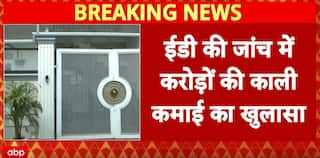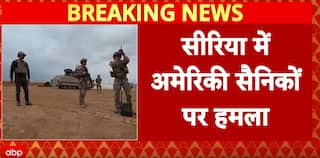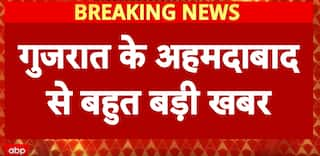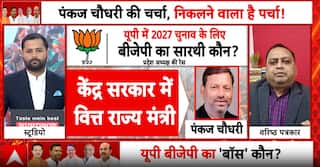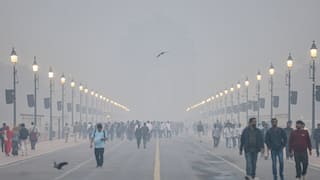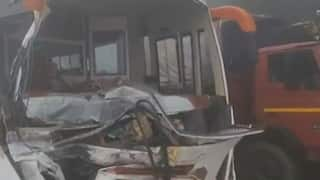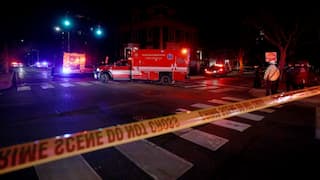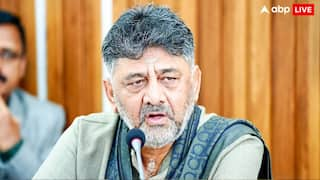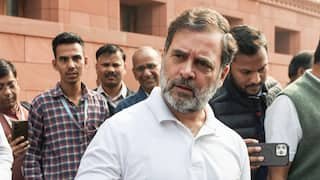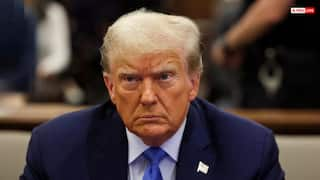Explorer
Back to the turbulent 60s-70s in West Bengal

BJP Chief Amit Shah/ Photo: Twitter/File
It takes one nor’wester to change the April weather in Kolkata. Kaal Baisakhis, as they are called, leave in their wake some uprooted trees and lampposts. Amit Shah’s recent whirlwind tour of West Bengal seems to have done just that to the political climate of West Bengal.
There is a newfound confidence among the State BJP leaders and workers that had vaporised after the Assembly election last year. This has been manifest in some overt display of aggression, such as Ram Navami processions and Hanuman Jayanti celebrations.
The ruling Trinamool Congress has retaliated with its own show of strength – raising the political temperature in certain pockets and a few spread-out instances of violent clashes between the cadre of the two parties. Chief Minister Mamata Banerjee reacted with her characteristic sharpness, accusing the BJP of attempting to create a communal divide.
Sections of the media, always on the lookout for an alternative narrative, were quick to catch the straws in the wind and start a new discourse about a resurgent BJP in Bengal. Opeds began to appear about the simmering discontent among ethnic Bengalis at the blatant indulgence towards the thirty-odd per cent and growing Muslim population of the State. A large chunk of them ,it is believed, have illegally migrated across the border.
The apparent discomfiture in the body language of Trinamool leaders at the CBI raising the heat on the Rose Valley scam and Narada sting case were read as signals of the Centre turning the screws. Perceived silent popular support for retribution is seen as disenchantment over corruption in the party’s top echelons.
To be clear, in the view of this writer, the Trinamool is not going anywhere and the BJP has miles to cross before it begins to make a dent in the ruling party’s dominance. Even the on-going civic body polls are expected to reaffirm the booth level dominance of the TMC. So, is there anything changing or is it just wishful thinking of Mamata Banerjee’s detractors?
The story of how BJP dissipated the gains of Narendra Modi’s campaigning in 2014 in the following two years is well known. Much of that squandering of goodwill can be pinned onto the poor calibre of the BJP’s State leadership.
But a large part of the responsibility can be attributed to the ambivalent attitude of the central leadership on how far to take the battle for Bengal. Therefore, after ratcheting up the offensive with the famous “BMB” (Bhaag Mamata Bhaag) rhetoric, Amit Shah and company suddenly started back-pedalling. One got the impression of even the Saradha investigations being allowed to turn cold.
The natural assumption was that the Narendra Modi Government had eased the pressure in expectation of support from Trinamool in the Rajya Sabha and the crucial GST legislation. But the Trinamool refused to play ball. Probably in their quest for national prominence, its MPs tried to grab the maximum share of voice in Parliament and were, often, at the forefront in agitations vying for equal camera space with the Congress.
On Demonetisation, Trinamool’s attack on the Government was one of the most savage – beating Mayawati, the Samajwadi Party and, perhaps, even Congress. Billboards came up in Kolkata exhorting “Modi Hatao, Desh Bachao”.
Mamata Banerjee began to make her presence felt in the anti-BJP mobilisation, positioning herself as a potential claimant for a prime position if a grand-alliance of opposition parties indeed became a reality. Just before declaration of the UP Assembly election, she proactively tried to stitch an understanding between BSP-SP-Congress anticipating the possibility of a hung Assembly.
However, like almost everyone else the Trinamool had not expected the Modi Tsunami in the UP election which upset many equations and sent large sections of the opposition into virtual sabbatical.
Quick to sense this, with GST under their belt, Amit Shah and Modi have once again upped the ante in West Bengal. But what can they hope to achieve with this renewed thrust in the run up to 2019 Lok Sabha elections?
As the numbers stack, under our first past the post electoral system, the BJP has a slim chance of capturing more than a handful of seats if the election were to be held today. They can hope for vote share to increase over the previous high reached during the Modi wave in 2014, but it is unlikely to tilt the scale.
It is argued that, BJP needs a prominent State leader to make it a viable force. But sadly no such personality is visible and importing a “non-resident Bengali” is not an option. There is also no Himanta Biswa Sarma in sight to cross over and work a miracle. Therefore, the only way forward for the BJP is to start from the grassroots and that is why the coming Panchayat Polls is so important.
It may not be so apparent when viewed with a telescope from a distance, political fortunes in Bengal are ultimately determined by lumpens. It is a function of the State’s economic condition, where streams of gainful employment have dried up over the last 50 years, that sucks the youth into a politico-business-mafia ecosystem.
When Congress returned to power in the 1970s it did so with the help of the “converted” Naxalites, who had been earlier weaned away from the moderate Left during the two United Front regimes. Subsequently, strategists like Pramod Dasgupta marshalled them into the CPI(M), thereby underwriting the Left Front’s rule of three decades.
Coming to think of it, the Trinamool movement reached its tipping point when the CPI(M) cadre in rural Bengal, disenchanted with the party’s misrule started crossing over to their camp. It is this form of anti-incumbency in the lower ranks of the Trinamool that the present State leadership of the BJP, under Dilip Ghosh, is probably hoping to tap into.
If the BJP can engineer a sizeable shift in ground support, it can gain a fighting chance, which coupled with a second Modi wave can take it to a higher plane. But that is going to be a long and tough haul. And, if the BJP is serious about a bottom-up strategy then West Bengal will see many more skirmishes in the coming months, reminiscent of the 1960s and 1970s, which were years of political meltdown.
Unfortunately, that will only not only spoil the socio-economic atmosphere but also intensify the hostility between the Centre and the State that is bound to take a toll on development and investment. The ultimate sufferers will be the hapless people of Bengal who have been battling the terminal decline of the State for a long time.
(Author is a writer and popular blogger on current affairs. His Twitter handle is @SandipGhose)
Disclaimer: The opinions, beliefs and views expressed by the various authors and forum participants on this website are personal and do not reflect the opinions, beliefs and views of ABP News Network Pvt Ltd.
Follow Blog News on ABP Live for more latest stories and trending topics. Watch breaking news and top headlines online on ABP News LIVE TV
View More









